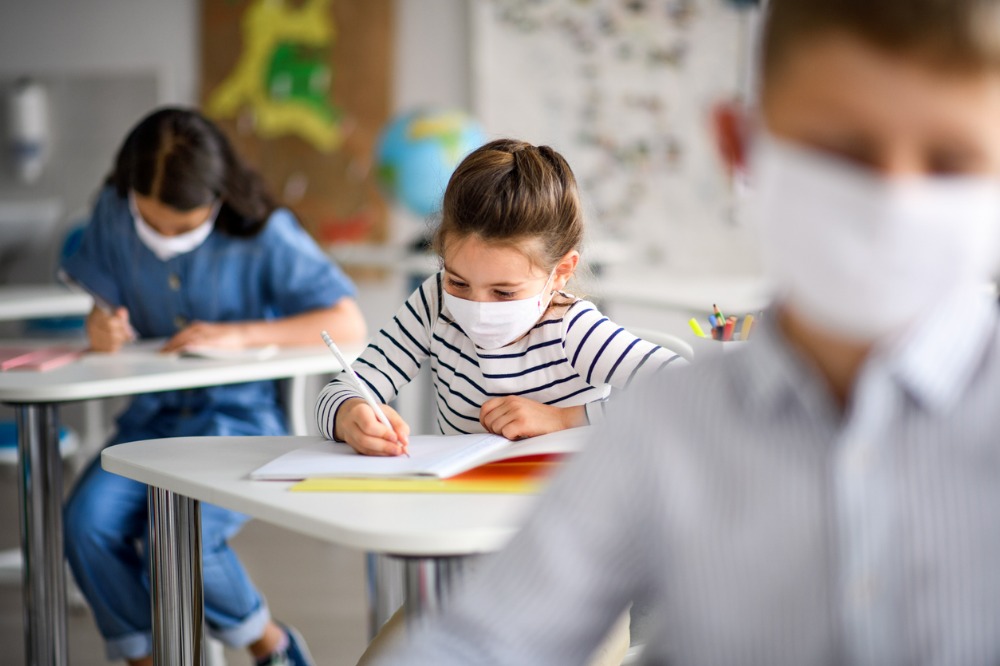
Rising infections from the Delta strain of COVID-19 have pushed several schools in Australia’s east coast to close to curb transmission. And while state governments iron out plans for a safe reopening of classrooms, most parents and teachers are concerned about keeping children protected once face-to-face learning commences.
Dr Katrina McLean and Dr Natasha Yates, general practitioners and associate professors at Bond University, acknowledged the validity of these concerns, given how highly contagious the Delta variant is.
“Many parents and schools have concerns about how to best protect children from COVID-19,” the experts wrote in article published in The Conversation. “There’s also the worry children will catch the virus at school and take it back to their families and communities.”
“While many children are now well-accustomed to washing and sanitising their hands, this is simply not enough to tackle the spread of COVID-19, especially now we know the virus is airborne. We need a whole toolbox of strategies,” they added.
According to the experts, there are “evidence-based, easy-to-implement” ways on how to protect children against infection. These are masks, ventilation, and vaccination.
Proper wearing of masks
Some states have already implemented mask mandates for children as young as five-years old as youth infections surge. According to the experts, wearing of masks among children is perfectly safe – the key is wearing masks properly.
“We reassure them masks have been found to cause no harm in children over the age of two,” they wrote. “When children wear masks, it doesn’t affect their breathing or reduce their oxygen levels. Importantly, when worn properly, masks are effective at reducing the spread of COVID-19, for adults and children alike.”
The experts shared these tips on the proper care and usage of masks:
- Fabric masks should be treated like underwear. Wash them regularly, ensure they cover everything, and don’t share.
- Label fabric masks like school hats – they will go missing!
- Surgical/disposable masks are single use. Like using a tissue to blow your nose, make sure it goes in the bin once used and then wash your hands.
- Masks should fit snugly – the less gaps there are the better they will work.
“While the majority of children will adapt quickly, there will be some who have specific and legitimate concerns, for example disabilities and sensory issues. GPs and paediatricians can help work out what the safest approach is for these children,” the experts advised.
Proper ventilation in classrooms
Several experts describe poorly ventilated classrooms as a “super-spreader event waiting to happen.” To address this, Dr McLean and Dr Yates offered these simple strategies:
- Get outside as often as possible. Call children into the classroom only once the day has started. Hold some lessons outside the classroom. During breaks and lunch time children should be outside whenever possible.
- Keep doors and windows open.
- Set air conditioning or heating systems to bring in as much outdoor air as possible.
- Check the air with carbon dioxide monitors. In confined spaces with lots of air that has been “breathed out,” monitors will detect higher levels of carbon dioxide (CO2), which is an indicator of ventilation.
“Improving the air quality in schools may also prevent some of the other colds and flus kids pick up at school, and reduce asthma and allergy symptoms,” the experts added.
Get children vaccinated
Pfizer has already won approval from the Therapeutic Goods Administration (TGA) to administer the COVID-19 vaccine to children aged between 12 and 15. In NSW, health officials are waiting for the green light from Australian Technical Advisory Group on Immunisation (ATAGI) to expand existing eligibility requirements.
“We know the vaccines work well in this age group and just like in adults, there is very close monitoring of adverse events from these vaccines in children,” the doctors wrote. “It’s reassuring to see very few serious reactions, and even those that are (for example myocarditis – inflammation of the heart) are treatable.”


